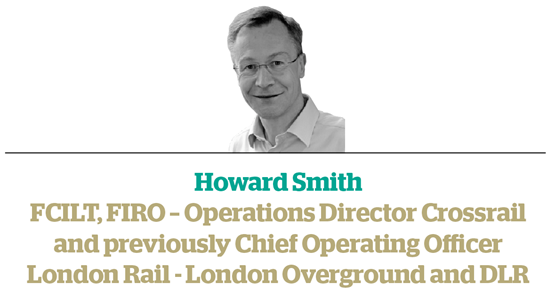
Railways and land use are inextricably linked. More than that, they drive each other - development (whether business, residential or industrial) heightened demand for railways from the Victorian pioneers onwards, and in turn the provision of excellent accessibility increased growth and land values by permitting much more dense and valuable development.
Looking to London, it is no coincidence that the low point of post-war railway ridership (and the closure of routes such as that into Broad Street) coincided with the bottoming out of London’s population after a sustained post-war fall, and prior to the resurgence to record numbers we see today.
Since the pioneering days of the Metropolitan Railway, examples of the successful linkage of railway and development have moved further afield - most obviously Japan and of course Hong Kong, where an overwhelming public transport mode share and constrained, Government-controlled, land begat the ‘transport and property’ model that underpins MTR.
In major western cities there have been great examples of transport and development in mutually beneficial sync. In the UK, the wider King’s Cross development springs to mind. Many continental city centre rebuilds have similar aspects, while even in New York developments such as Grand Central, Hudson Yards and the future (re-redevelopment) at Penn Central show what can be done in a difficult land use and regulatory environment.
Crossrail brings very significant over-site development, making a notable contribution to the costs of the project. It has also proved the catalyst for true transformation of many parts of the route. Transport for London is gearing up for a major long-term development focus, securing revenue but also increasing the use of locations with high public transport accessibility - a financial and residential win, but also a win for the environment, with reduced emissions and re-use of ‘brownfield’ sites.
At a more local level stations are regaining their place as a central focus of economic as well as transport activity. St Pancras and Birmingham New Street are obvious examples, while the restoration by London Overground of Crystal Palace’s once derelict edifice into a glorious fusion of transport, architecture and coffee is another.
So what are the key lessons in ‘getting the development right’?
Firstly, setting and holding to a medium- to long-term plan. Railways and development are two long-term businesses, both technically and economically. A significant site such as King’s Cross or Stratford inevitably entails the property cycle running its course and individuals (and other bodies) coming and going. Short-term expediency diminishes the overall benefits - financially, to users, and in reduced quality of design and place-making.
There’s also a need for ruthless clarity as to objectives, what can be achieved, and the timescales needed to get it right. Anthony’s article describes a host of schemes, but with differing scale and objectives (financial, transport, social and environmental) only rarely can we achieve all in balance. We may need, as a nation, to release brownfield public land for housing at locations far from existing stations - as with some of the long-defunct freight yards that Railfreight Distribution sold in the 1990s. But this is a very different task to reinvigorating small and medium-sized stations as community hubs, and in turn vastly different to the large, dense developments in city centres in the UK and elsewhere which feature massive multi-million sq ft development that can bring value and passengers to the railways next to (or below) them.
Finally, we need to remember that, certainly in major cities, the railway itself is the ‘golden goose’. It can exist, albeit less well, without the development, but constraining the railway, reducing reliability or increasing operating costs by making maintenance or stabling harder will lead to less valuable development - at least in the medium term. It’s the high-quality accessibility that delivers value, from Singapore and Tokyo to New York and London.
As someone whose professional involvement with rail started in the difficult days of the late 1980s, I feel we should rejoice at the opportunities for near-Victorian levels of development and growth… and make the very most of them.











